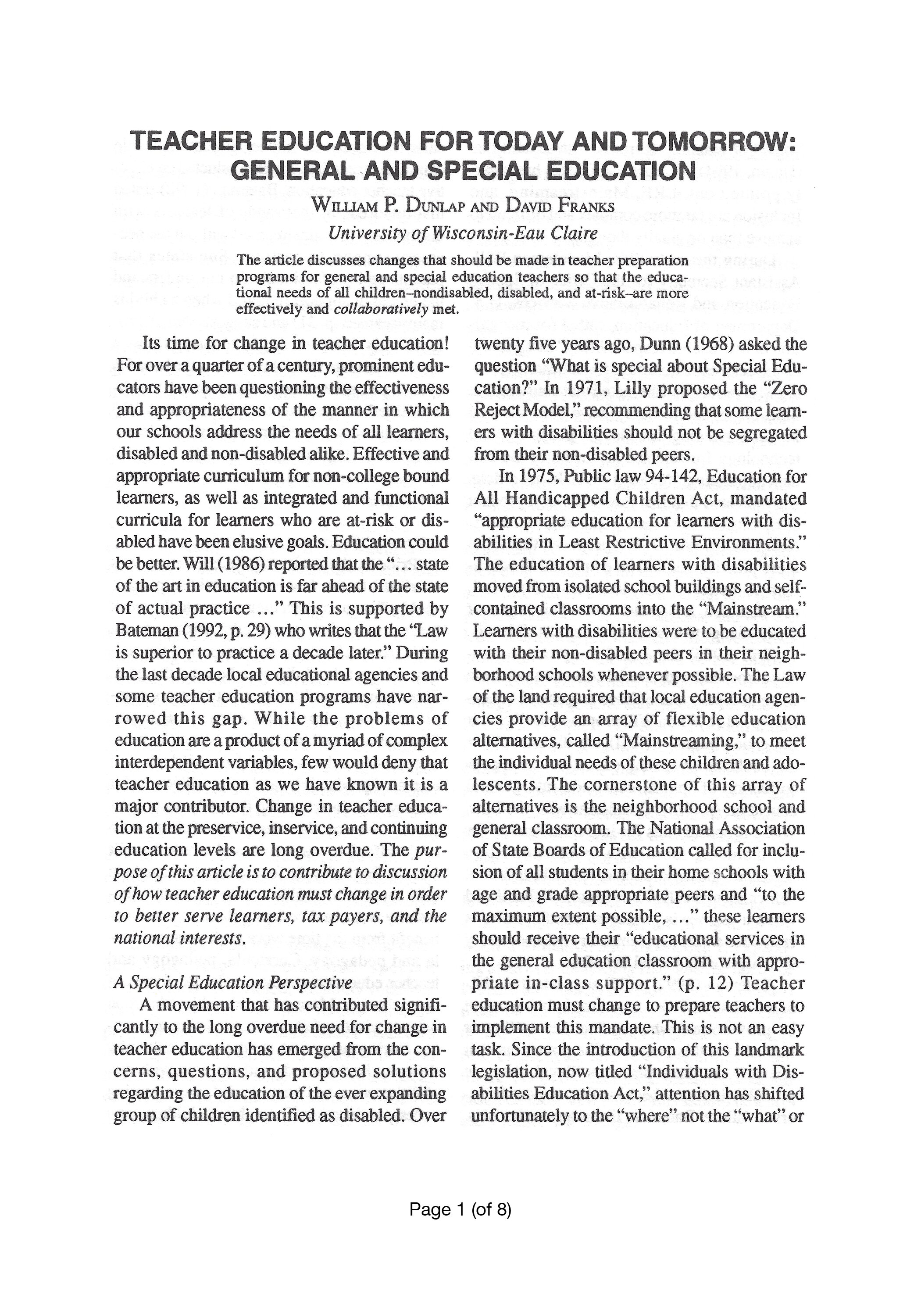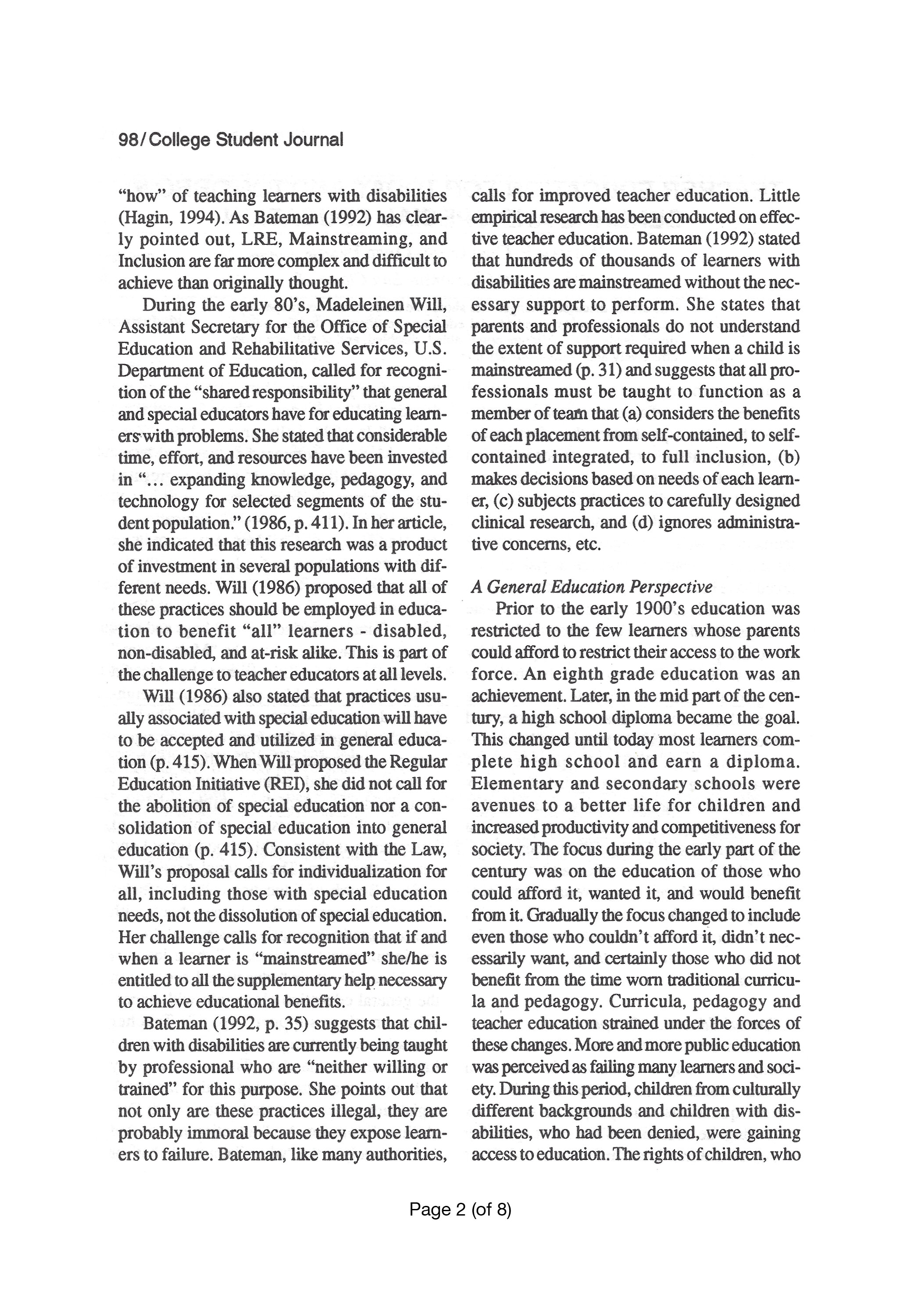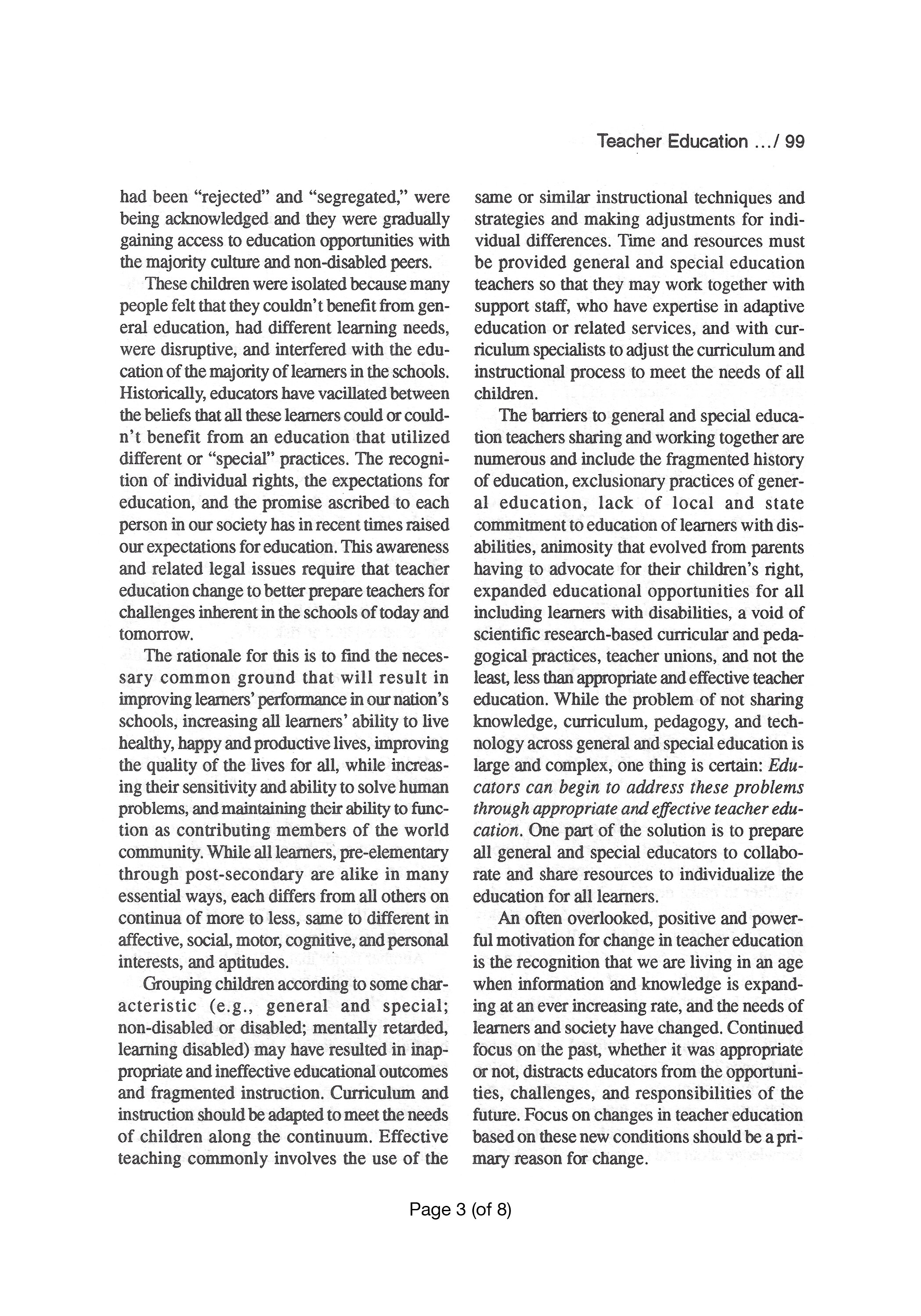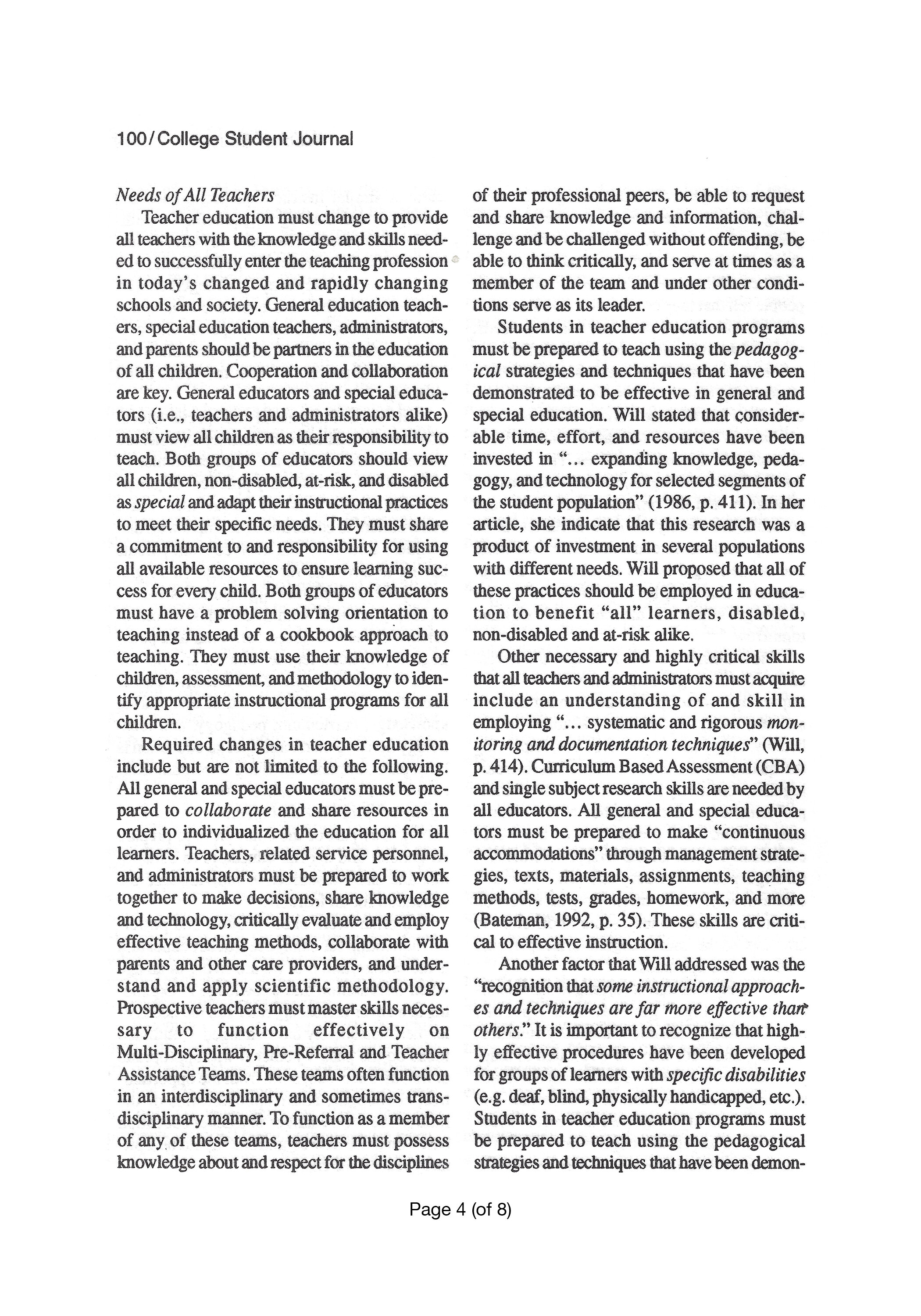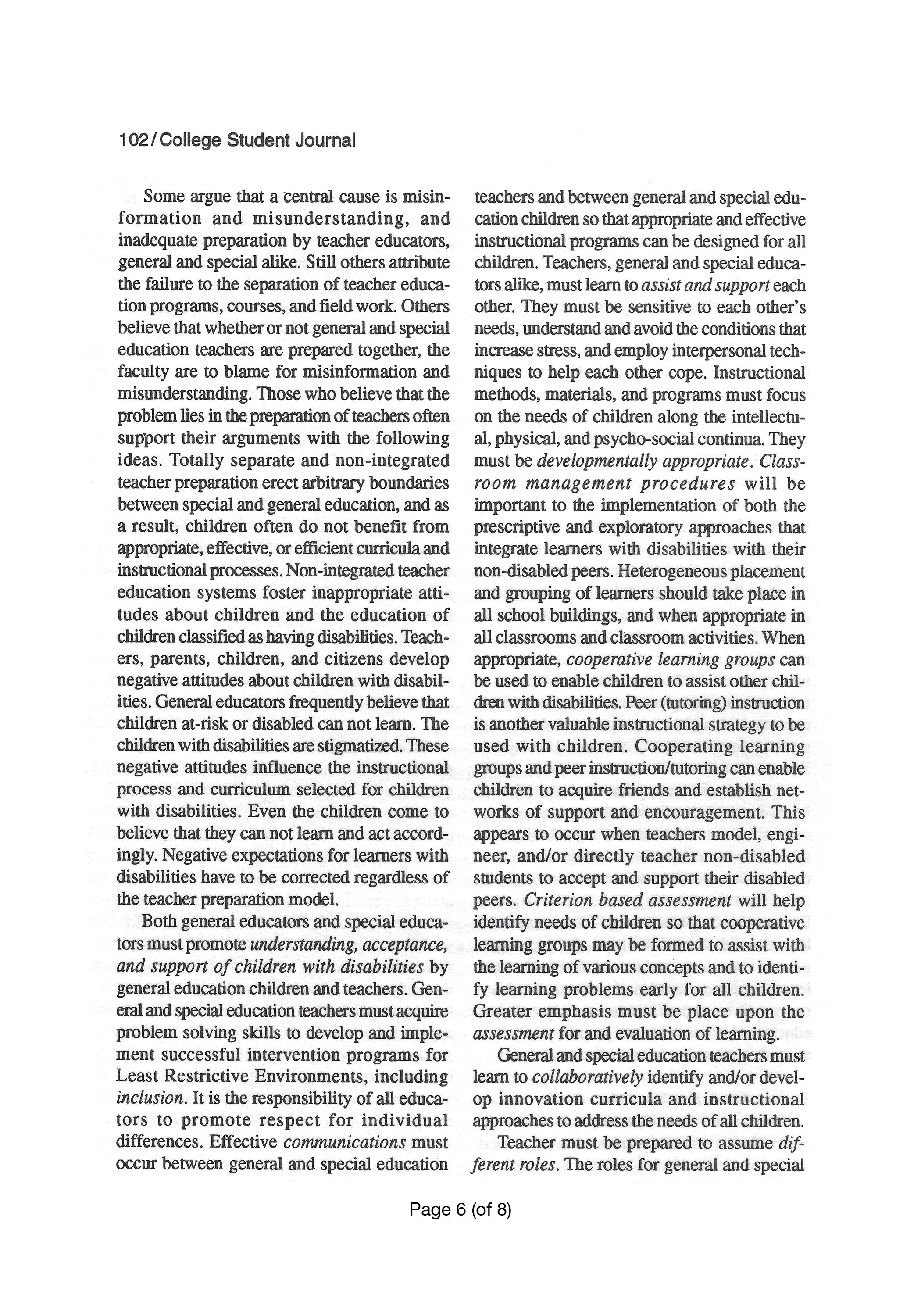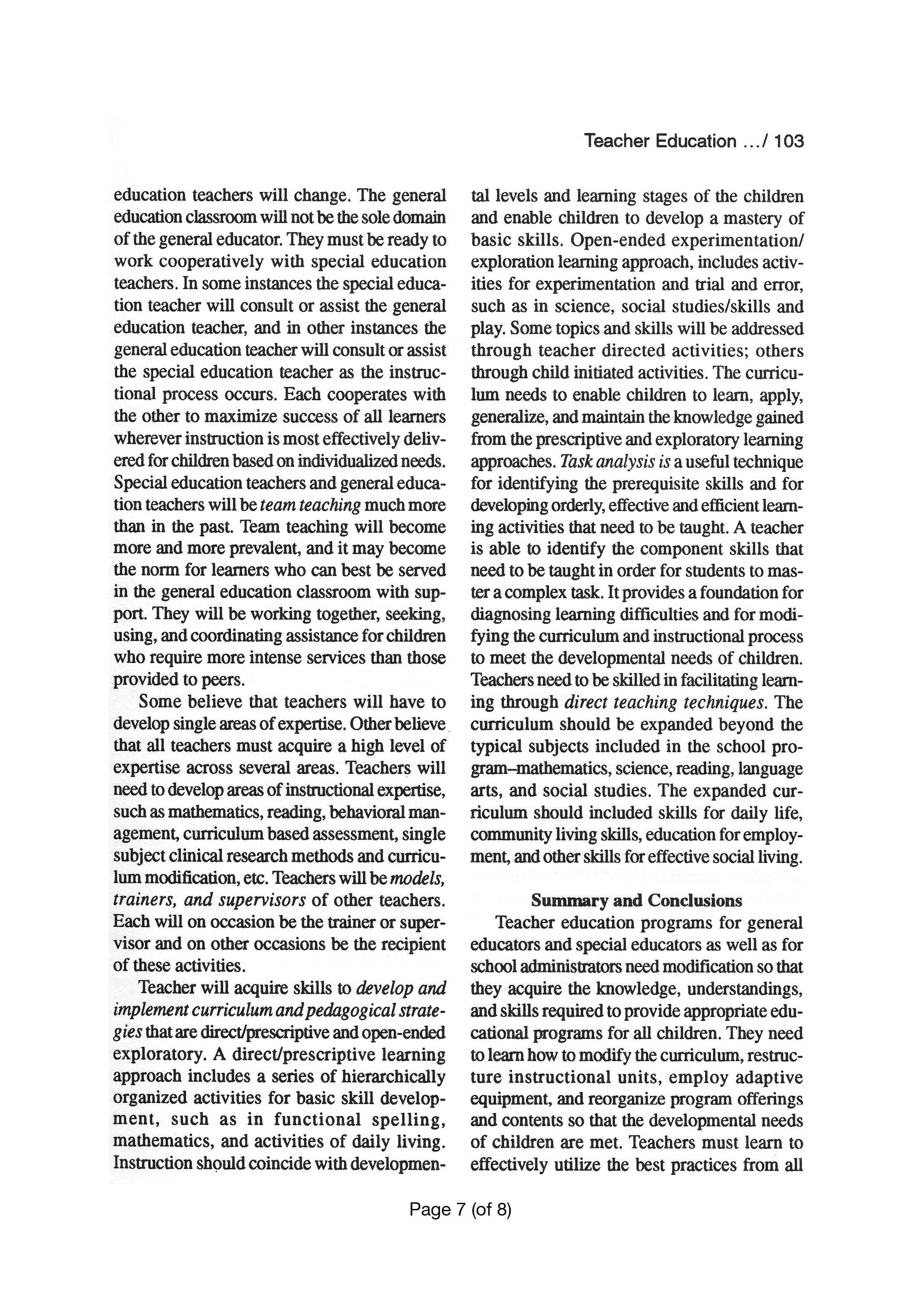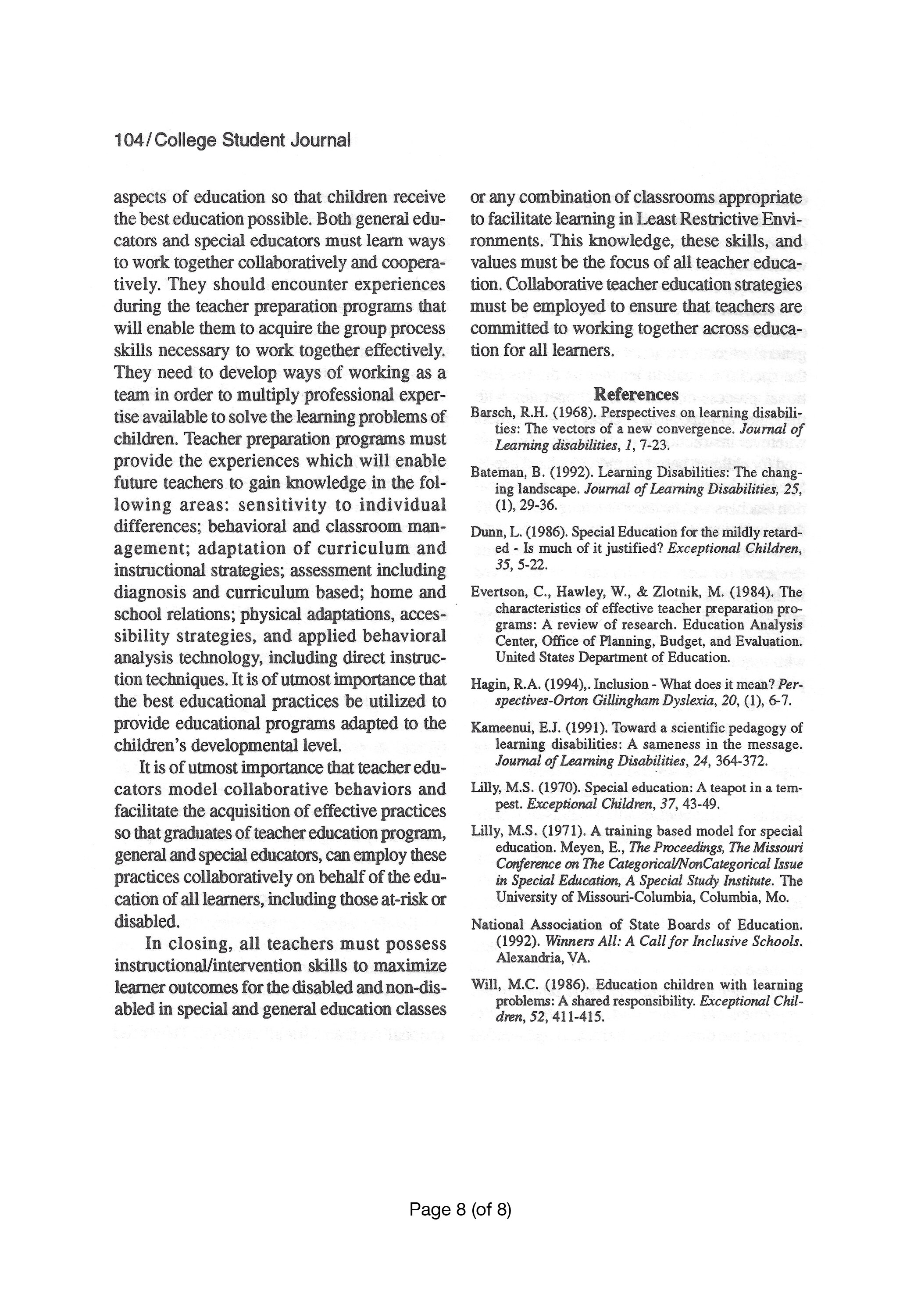Teacher Education Challenge: Inclusion
This article was the product of discussions about campus teacher education program challenges related to inclusion practices. It was undertaken for the purpose of educating campus administrators and general/special education colleagues.
Issues related to special education labeling or categorization and placement practices and changes in Federal Law (Brown vs. Board of Education of Topeka, 1954) and legislation (Education for Handicapped Children’s Act, 1975) gradually led to more inclusive practice. The emergence of inclusive practice has not been without problems. One such problem was the adoption of practice without attention to an orderly development process, including evaluation. During this period, the Department of Special Education, University of Wisconsin-Eau Claire worked with area school districts and the State Department of Education to sponsor a number of summer conferences that featured professionals and parents discussing the pros and cons of the full range of inclusion placement issues. From this we developed a position that influenced the direction of our teacher education practices. Our conclusion was that one placement model did not meet the individual needs of all learners and that teachers needed to be able to function in a full range of placement models while at the same time evaluating and participating in orderly changes based on evaluation data and research evidence.
Dunlap, W.P. & Franks, D.J. (1996). Teacher Education for Today and Tomorrow: General and Special Education. College Student Journal, 30, 97-104.
Back to the top | Next: Curriculum, Brunner’s Spiral Model >



![slide30[3].jpg](https://images.squarespace-cdn.com/content/v1/558aa7cfe4b0691bf6ee22a9/1605550275398-X49MGLN1S52B7YU1S9MY/slide30%5B3%5D.jpg)

![slide36[1].jpg](https://images.squarespace-cdn.com/content/v1/558aa7cfe4b0691bf6ee22a9/1607059541587-JJ42MTP6RC0P3Z9C51RH/slide36%5B1%5D.jpg)
![slide48[1].jpg](https://images.squarespace-cdn.com/content/v1/558aa7cfe4b0691bf6ee22a9/1607059561523-MBOATN2UDW3UWH3N5V7N/slide48%5B1%5D.jpg)
